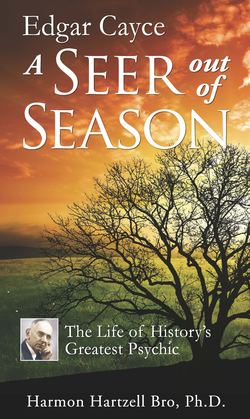Читать книгу Edgar Cayce A Seer Out of Season - Harmon Hartzell Bro - Страница 35
На сайте Литреса книга снята с продажи.
I Never Read One of Cayce’s Readings
ОглавлениеA few doctors in the Virginia Beach and Norfolk area took referrals from Cayce seriously and were willing to talk with me. Most were osteopaths. But there was also an M.D. who would on occasion write prescriptions that Cayce recommended. He insisted that Cayce’s transcripts be read aloud to him so that he could affirm to any suspicious colleagues that “I never read one of Cayce’s readings.” There was the local pharmacist, a college classmate of Cayce’s eldest son, who had for years filled Cayce’s prescriptions, even those that seemed to his training to be dubious, hopeless, or dangerous. So far he had never regretted it. He reported case after case to me in which an unorthodox chemical resource from Cayce’s readings had produced surprisingly effective results.
Suppose Cayce’s process could one day supplement medical care? How would it work? Would there be one or more gifted figures attached to clinics or hospitals, busy with baffling cases? Though it seemed unlikely, we had already processed a request to Cayce from the dean of a Harvard graduate school and had discovered that Still-Hildreth osteopathic hospital in Missouri found Cayce’s aid so valuable that they routinely sent him reports on patients he referred. Decades later I would witness the unobtrusive use of psychic specialists by multi-staff clinics run by medical doctors. But the prospect seemed dim in the mid-1940s.
Would medical education include courses and supervision in heightened perception, equipping physicians to use their intuition and prayer guidance? I could not guess then that within two years I would be meeting with a medical faculty in Chicago to explore just such options, and in later years be invited to medical centers (several times to the Mayo Clinic) to conduct workshops and consultations on maximizing such resources for physicians. Would patients be pressed to use self-help intuitive guidance, with nightly dreams checking their daytime impressions? This, too, was difficult to conceive, though in fact I would later lecture for national medical groups on just this process and watch it gain surprisingly wide momentum. It was more reasonable to picture researchers providing the decisive parallel to Cayce, working in teams to follow leads from him and other gifted figures on particular illnesses. Given the perilously small number of researchers interested in Cayce during wartime, it seemed unlikely. But later I would meet with faculty from Johns Hopkins and a whole cluster of Philadelphia medical schools to work on just such projects.
In the years that followed, the potent impact of observing and studying Cayce’s medical service would lead me into my own second vocation of health care alongside my teaching in psychology of religion. As a professional counselor and psychotherapist, I would labor for decades with Cayce’s concepts of health and treatment, not only in private practice in Chicago, Boston, and elsewhere, but serving several years apiece as a consultant and staff member in teaching hospitals. In due time I would teach psychotherapy in graduate schools and institutes, supervise graduate counselors, design a major Veterans Administration hospital program for substance abuse, serve in a residential farm community for young psychotics, run a multi-unit hospital research program, and even find myself cited in American Men of Science.26 June would also get her doctorate and do Jung-oriented counseling. But at twenty-three in the boarded-up resort town of Virginia Beach, all of this was yet to unfold, while I struggled with the enormous puzzle of evaluating Cayce’s medical aid.
The place to start seemed to be outlining Cayce’s view of normal health maintenance, upon which his specific treatment programs could be mounted for examination. Reviewing the daily entries in my black leather notebook and comparing them with sample transcripts in his thousands of case files led to summarizing the Cayce model of health care with four plain words: Out, In, Push, and Circuits. Each represented a process for keeping healthy, as well as for treating impairment, with variations that ranged from common sense cures to weighty interventions.27 Each process could be tracked not only in bodily health, but in mental and spiritual dimensions to produce well-being and productive wholeness with others (a perspective which would much later be called “holistic health”).28
